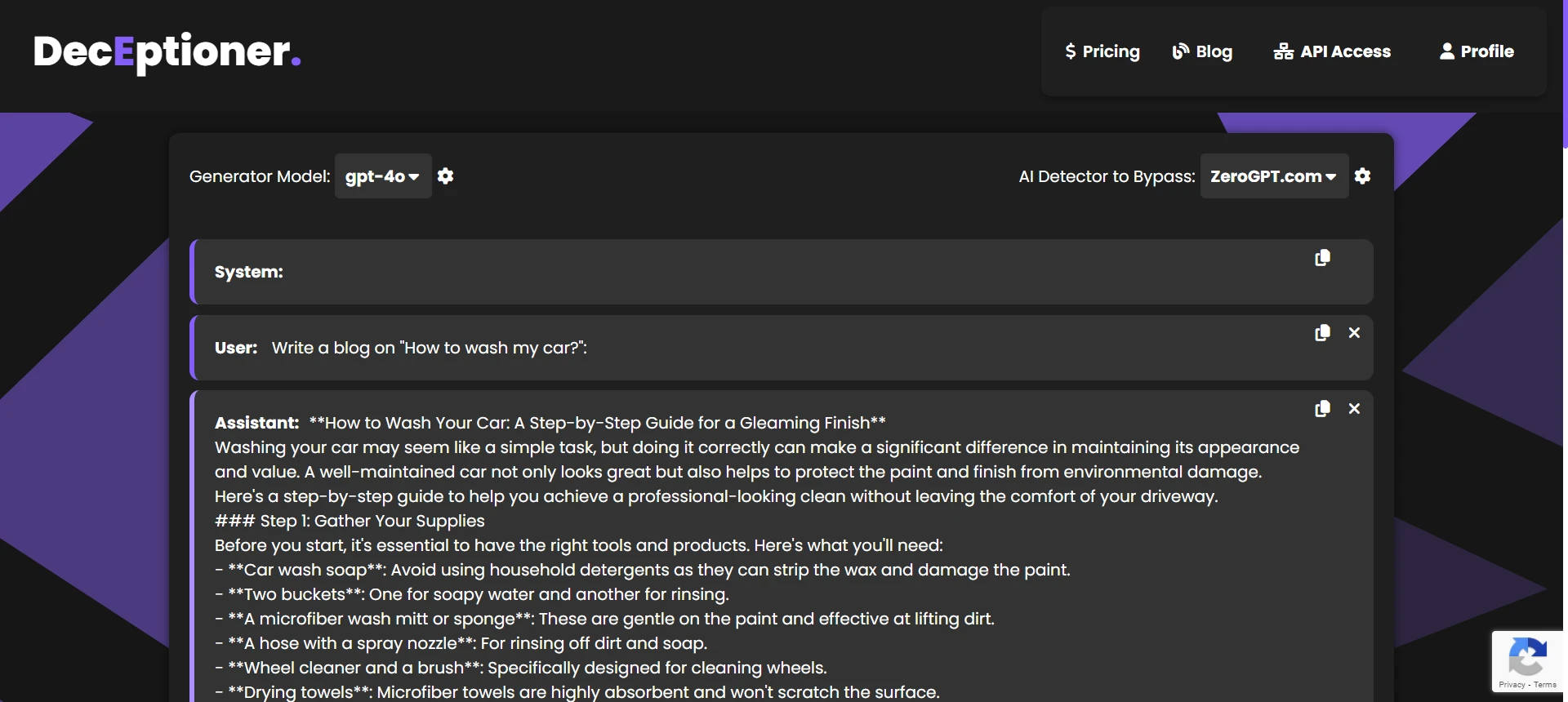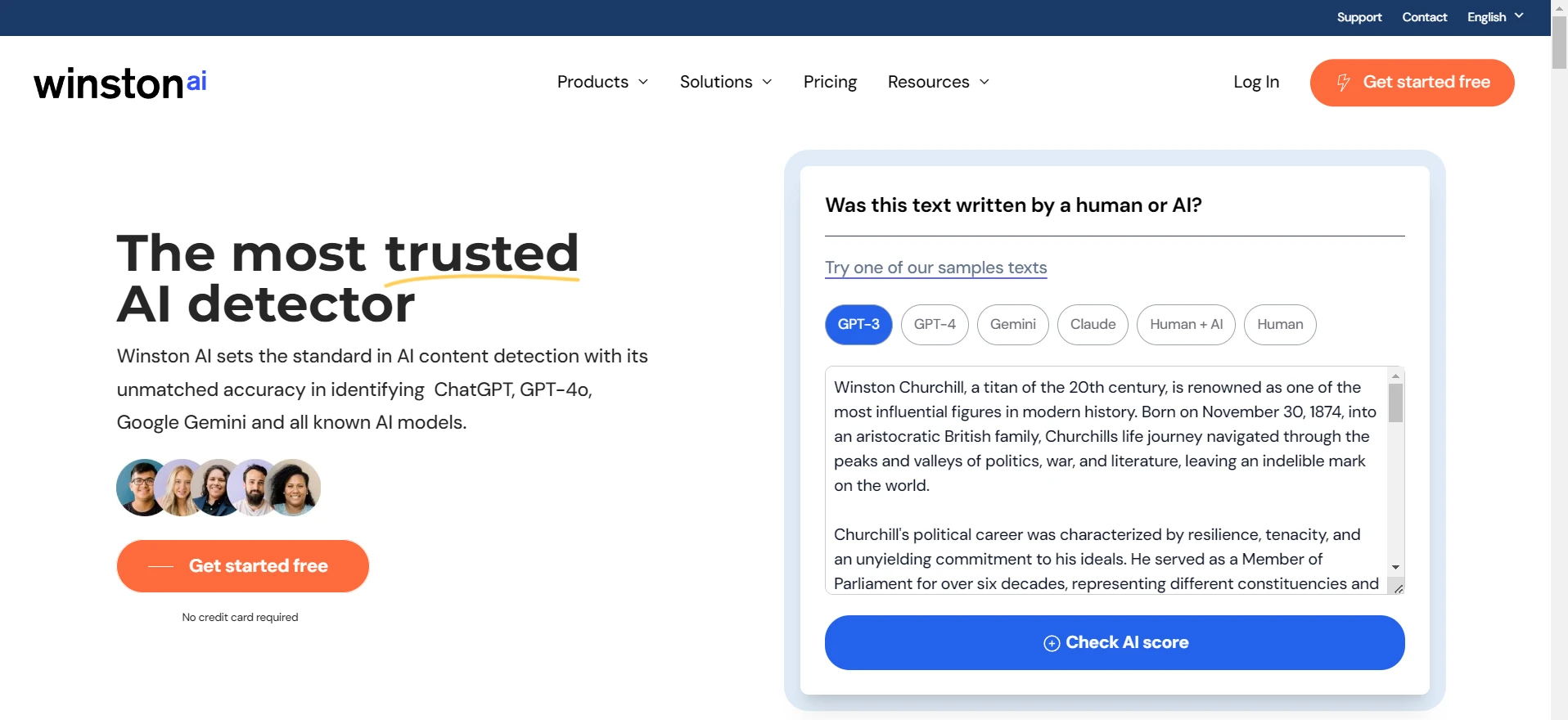As we all know, GPTZero is pretty popular these days, but is it actually better than ZeroGPT or not? Short answer: YES. Longer answer: the devil lies in the details. So keep reading to know more about it.
Why GPTZero beats ZeroGPT?
The simplest explanation is that GPTZero is purpose-built for detecting AI text reliably, and the metrics clearly reflect it. Below is a snapshot of the overall performance of these two AI detection tools.
Overall Metrics: GPTZero vs ZeroGPT

| Metric | GPTZero | ZeroGPT |
|---|---|---|
| Accuracy | 0.906 (90.6%) | 0.738 (73.8%) |
| Macro F1 | 0.906 | 0.737 |
On this 160-sample benchmark, GPTZero is decisively more reliable than ZeroGPT. And in case the words “accuracy” and “F1” sound too technical, here is a quick lowdown for you:
- Accuracy: Shows how often the tool is correct in labeling text as “Human-written” or “AI-generated.”
- F1 (macro-F1): Merges precision and recall. It punishes a tool that over-flags texts as AI or as Human, keeping the confusion matrix in check. Higher is better.
By both measures - accuracy and macro-F1 - GPTZero leads by about 17 percentage points. That is substantial.
Class-wise F1 Scores
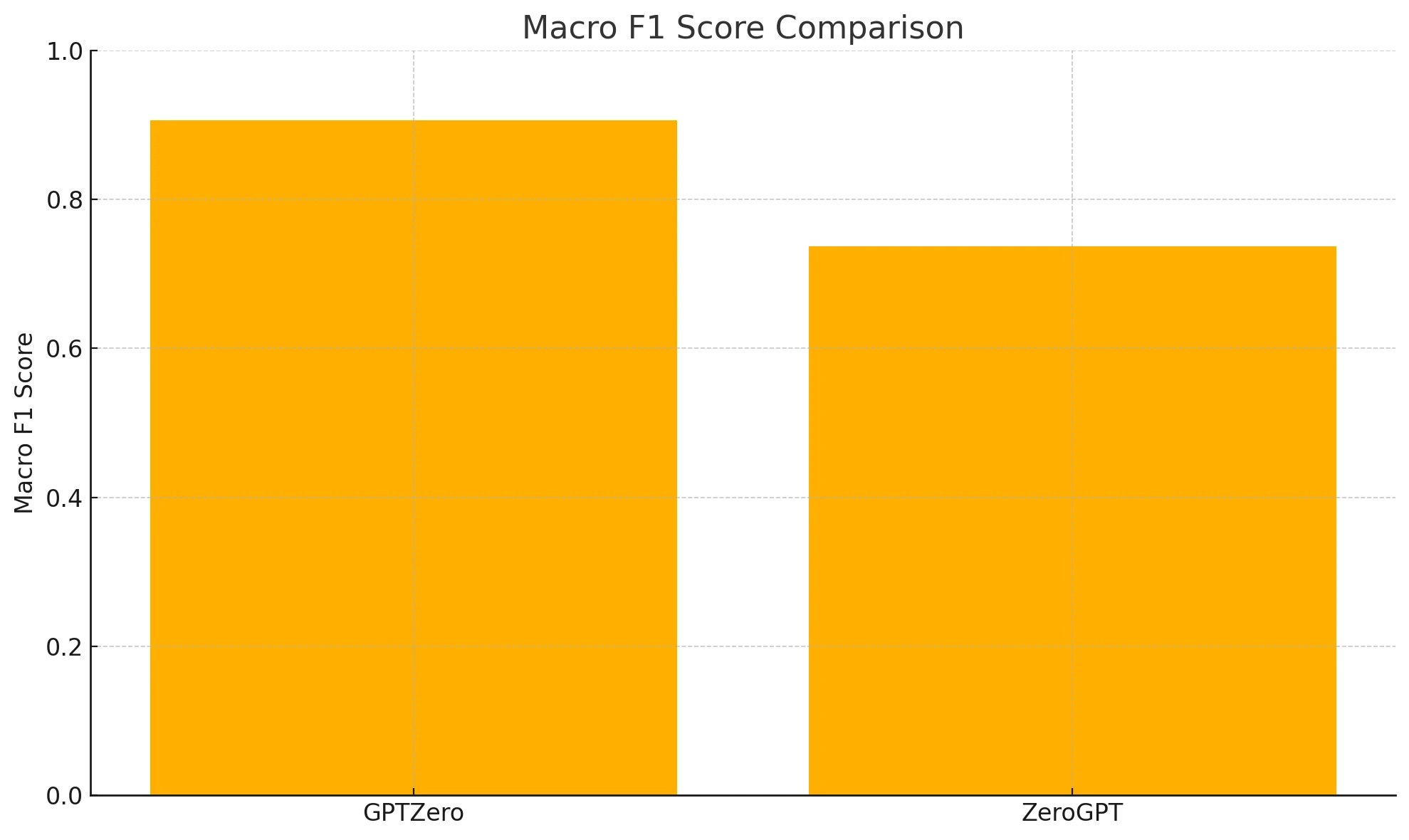
| Class | GPTZero F1 | ZeroGPT F1 | Notes |
|---|---|---|---|
| AI | 0.901 | 0.727 | ZeroGPT misses ≈1 in 3 AI texts; GPTZero ≈1 in 6. |
| Human | 0.911 | 0.747 | ZeroGPT wrongly flags ≈25 % of human texts as AI; GPTZero ≈1 in 8. |
So, basically, ZeroGPT misclassifies about one out of three AI samples, while GPTZero only misclassifies about one out of six. Also, ZeroGPT incorrectly flags a quarter of human texts as AI, whereas GPTZero wrongly flags about one in eight. That’s a huge difference if you’re worried about making false accusations.
Also Read: Can ZeroGPT detect Quillbot?
Score distributions
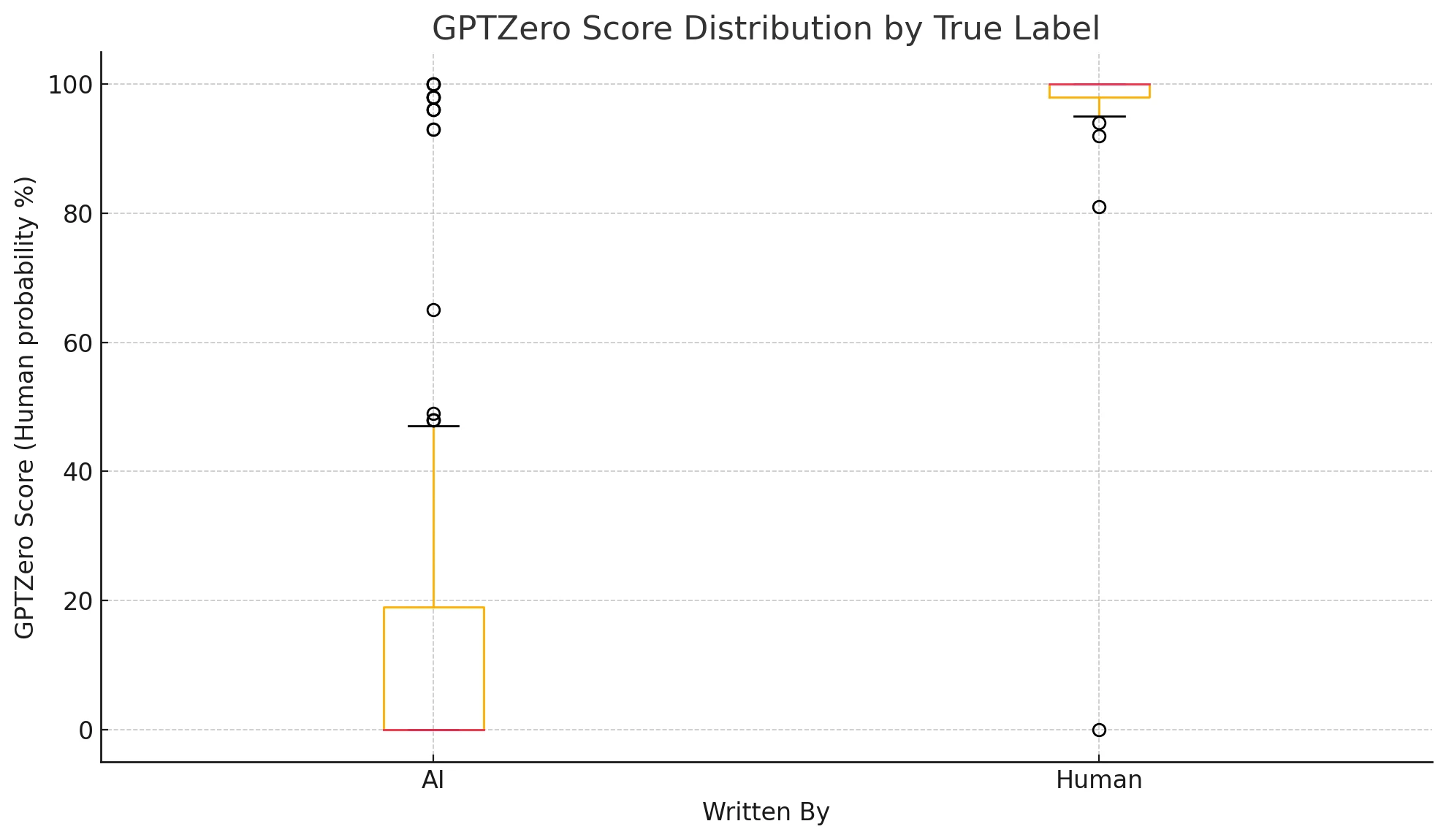
If you see their box-plots, you’ll notice GPTZero’s AI scores cluster near 0% for AI texts and 95–100% for human texts. This indicates a cleaner separation: it’s easier to pick a threshold and decide what’s AI or not.
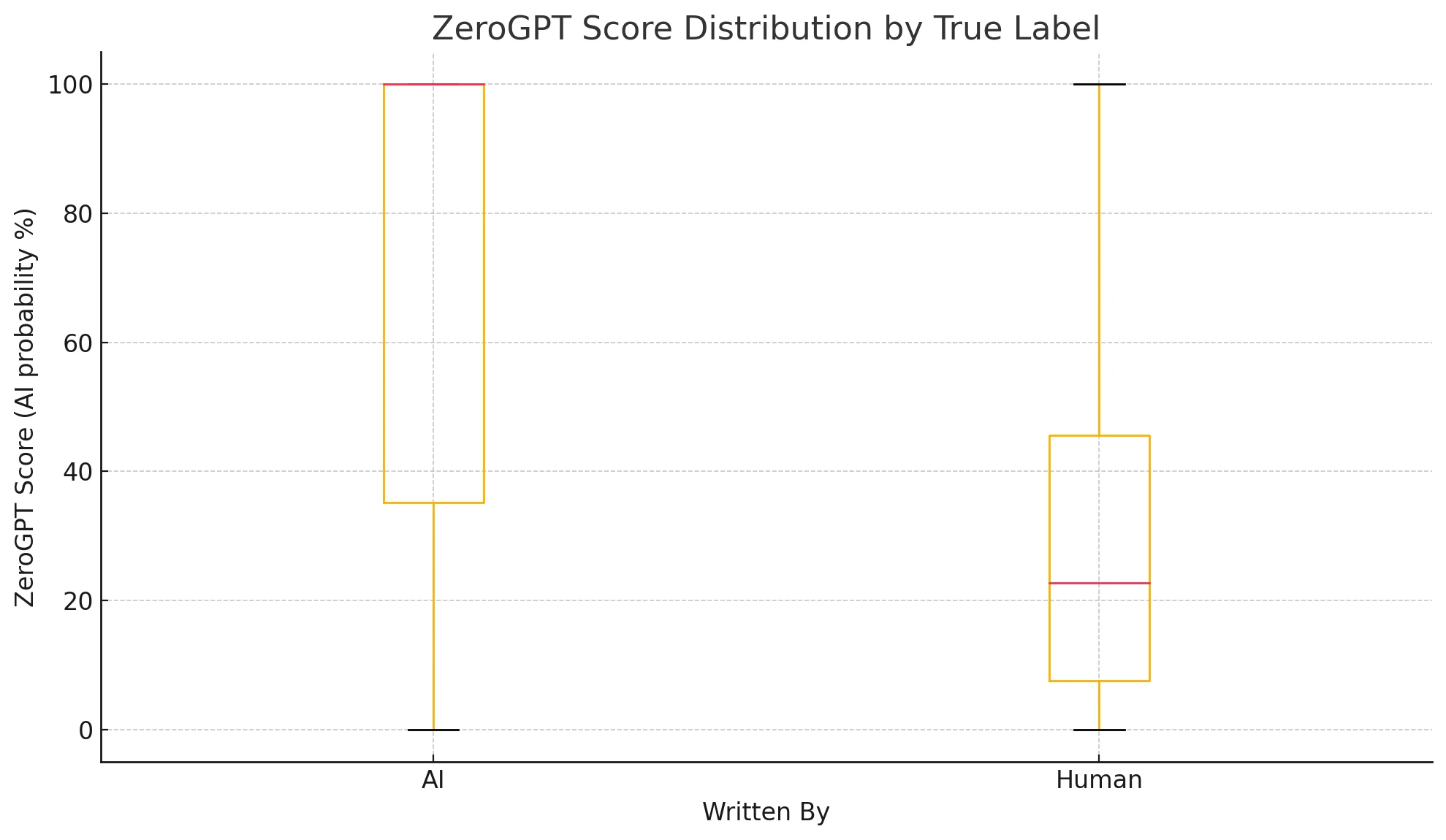
On the other hand, ZeroGPT’s scores for human texts are more scattered; a noticeable chunk falls in a shady 10–50% “uncertainty zone.” This can be one major reason behind ZeroGPT’s bigger false-positive rate.
Practical Implications
| Situation | Better pick | Why |
|---|---|---|
| You must avoid false accusations of AI use (e.g., student essays) | GPTZero | Far lower false-positive rate on human texts. |
| You only care about catching AI text and can tolerate some misses | GPTZero still preferable | Even on “AI” label GPTZero has higher recall. |
| You need an extra opinion/ensemble | Run both, flag when both agree | Combine strengths; but GPTZero alone already performs strongly. |
Explanation for some of the technical jargon:
- False-positive: A human text flagged as AI.
- Recall: Among all AI texts, how many did the tool catch correctly?
Side note: If you’re absolutely paranoid about missing any AI text, you might want to run both GPTZero and ZeroGPT—only flag text if both detectors say it’s AI. But for most realistic use cases, GPTZero alone is good enough.
The Bottom Line
On every major metric, GPTZero outperforms ZeroGPT. Its out-of-the-box results also show a much cleaner separation between AI- and human-authored content. So, if you are worried about false accusations or you just want a tool that catches AI text more reliably, GPTZero is a safer and more accurate choice.

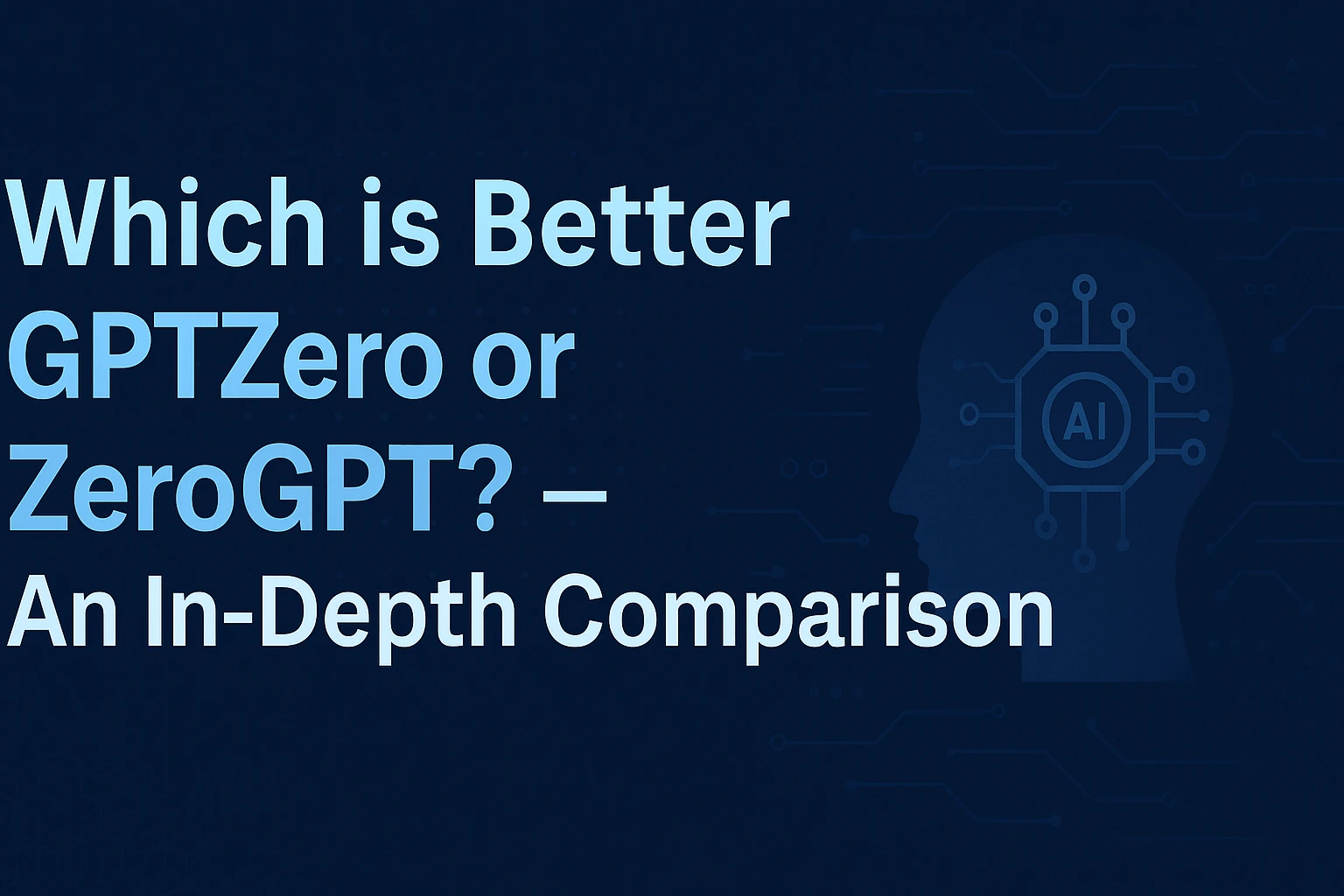
![[STUDY] Can Phrasly AI Humanizer Bypass ZeroGPT?](/static/images/can-phrasly-ai-humanizer-bypass-zerogptpng.webp)
![[STUDY] Can Phrasly AI Bypass Turnitin?](/static/images/can-phrasly-ai-bypass-turnitinpng.webp)
![[HOT TAKE] Is Winston AI or GPTZero more accurate?](/static/images/is-winston-ai-or-gptzero-more-accuratepng.webp)
![[NO NONSENSE ANSWER] Is Turndetect Permanently Down?](/static/images/is-turndetect-downpng.webp)
